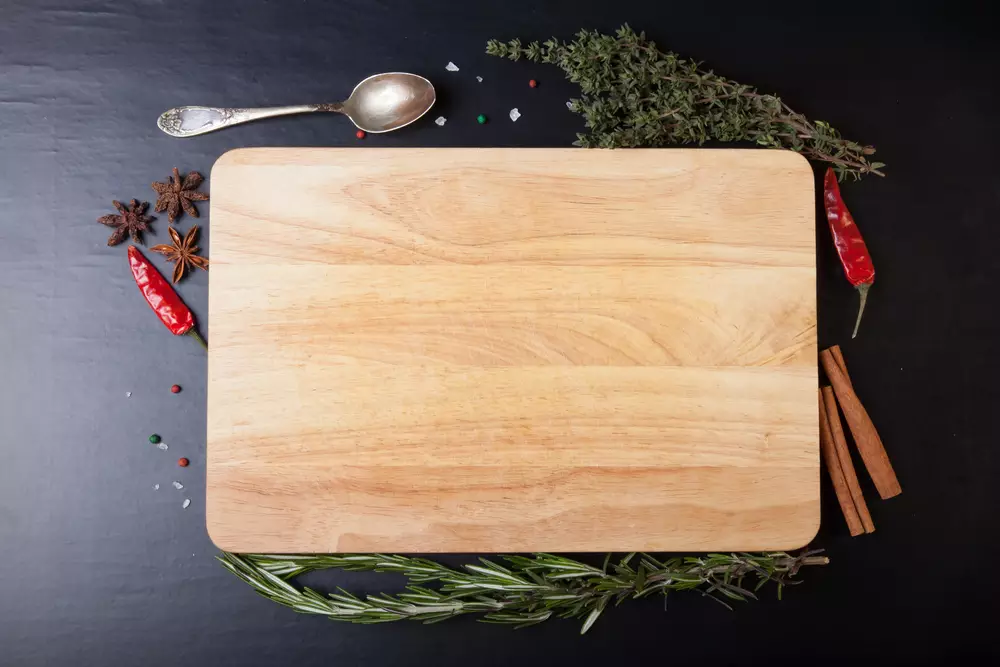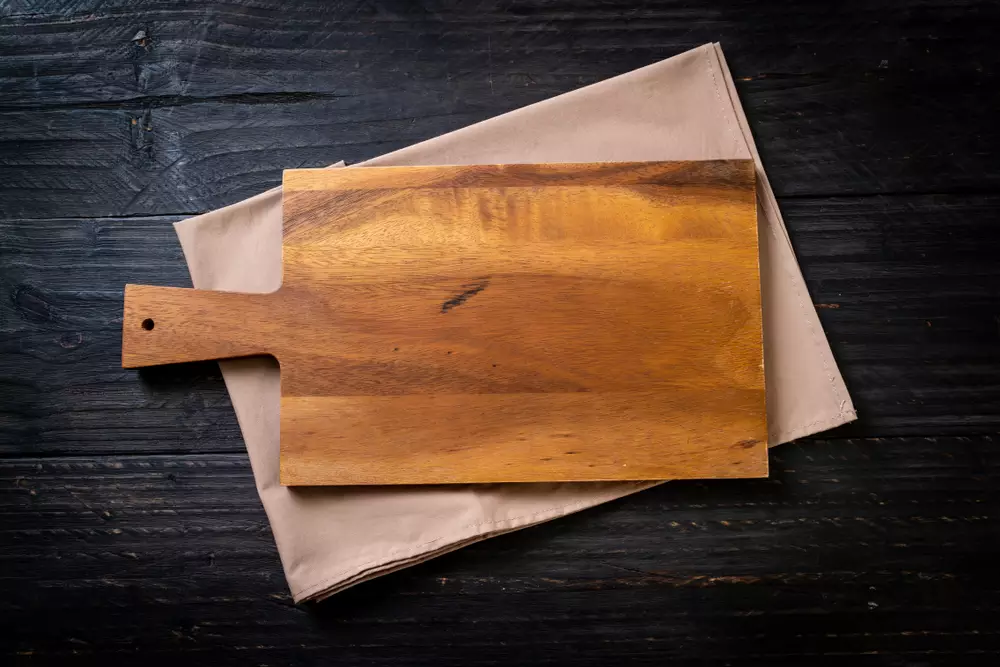If you love spending time in the kitchen, you probably understand the importance of having the right tools, and a cutting board is undoubtedly one of the most essential. But what wood is best for cutting board?
When it comes to selecting the ideal material for a cutting board, wood emerges as a timeless and popular choice. Known for its durability, natural beauty, and practicality, wood has been favored by both professional chefs and home cooks alike.
With the wide variety of materials available, choosing the best cutting board can be quite a challenging task. However, not all wood is created equal, and choosing the right type is essential to ensure longevity and optimal performance.
In this comprehensive guide, we’ll explore the various types of wood used for cutting boards and help you make an informed decision on selecting the best one to suit your needs.
Factors to Consider When Choosing Wood
When choosing wood for a cutting board, there are several important factors to consider. Each factor can impact the performance, durability, and overall suitability of the cutting board. Here are the key factors to take into account:
- Hardness and density: Opt for hardwoods as they are generally more durable and resistant to knife marks and scratches compared to softwoods. Also, higher-density woods tend to be more resistant to moisture absorption and less prone to warping or cracking.
- Natural Oils: Some wood species contain natural oils that help resist water and bacterial penetration, making them ideal for cutting boards.
- Food Safety: Ensure the wood is food-safe and doesn’t release harmful substances or chemicals when in contact with food.
- Durability: Consider the wood’s ability to withstand regular cutting and chopping without excessive wear or damage.
- Maintenance: Different woods have varying maintenance requirements, so choose one that fits your preferred level of upkeep.
- Eco-Friendliness: Select wood from sustainable and responsibly managed sources to minimize environmental impact.
- Budget: Consider the cost of the wood, as exotic or rare woods can be more expensive.

Top Wood Species for Long-Lasting and Secure Cutting Boards
What wood is best for cutting board? Here are popular choices for cutting board woods due to their exceptional hardness and durability:
Maple Wood Cutting Boards
Maple wood is a top choice for cutting boards, and for good reason. It is extremely strong and resistant to wear and strain because of the tight grain pattern. Additionally,maple has natural enzymes that help combat bacteria, making it a hygienic option for food preparation. It adds a touch of elegance to your kitchen with its light shade and smooth texture.
Walnut Wood Cutting Boards
Walnut wood cutting boards are well-regarded for their rich, dark color and luxurious appearance. The wood’s natural oils provide self-healing properties, allowing it to recover from cuts and scratches over time. Although walnut wood is exceptionally strong and gentle to knife blades, your knives will stay sharper for a longer period of time.
Cherry Wood Cutting Boards
Cherry wood offers a beautiful reddish-brown hue that darkens with age, giving your kitchen a timeless appeal. While not as hard as maple or walnut, cherry wood cutting boards are still durable and can handle heavy chopping. Cherry wood, like walnut, has natural oils that increase its bacterial resistance.
Bamboo Cutting Boards
Cutting boards made of bamboo have grown in popularity recently because they are sustainable and friendly to the ecosystem. Bamboo is an environmentally friendly material since it grows quickly. Cutting boards made of bamboo are a great choice for people who care about their health because they are lightweight, simple to clean, and naturally antimicrobial.
Teak Cutting Boards
Teak wood is known for its exceptional durability and water-resistant properties. It is often used in outdoor furniture due to its ability to withstand the elements, making it perfect for cutting boards as well. Teak cutting boards are resistant to moisture, warping, and cracking, ensuring they remain in top-notch condition for years.
Olive Wood Cutting Boards
Olive wood cutting boards boast a distinctive grain pattern and stunning visual appeal. The wood’s natural oils make it resistant to bacteria, and its hardness ensures it can withstand heavy-duty chopping. Olive wood’s unique character and elegance can add a touch of artistry to your kitchen.
Beech (Fagus sylvatica)
Beech (Fagus sylvatica) wood is a popular choice for cutting boards due to its moderate hardness, smooth surface, and affordability. While not as hard as some hardwoods, with proper care, beech wood cutting boards can provide reliable performance and complement various kitchen styles with their light color. Regular maintenance, including cleaning and occasional oiling, helps ensure their longevity and durability.
Acacia Cutting Boards
Acacia wood cutting boards are not only durable but also budget-friendly. Acacia lends any kitchen a lovely appearance with its attractive blend of bright and dark tones.However, as with all cutting boards, proper care and maintenance are necessary to extend their lifespan.
Ash (Fraxinus excelsior)
Ash (Fraxinus excelsior) wood is an excellent choice for a cutting board due to its durability, strength, and beautiful grain pattern. Its natural hardness makes it resistant to knife marks and provides a stable surface for slicing and dicing. With proper maintenance and periodic oiling, an ash wood cutting board can last for years while adding a touch of elegance to your kitchen.

What is the best wood for cutting boards?
When it comes to selecting the best wood for a cutting board, it is important to consider various factors. Hardwoods are widely regarded as the top choice due to their durability, hardness, and natural resistance to moisture. Among the hardwood options, maple and beech are often favored for their exceptional cutting surfaces and hygienic properties. These woods are less likely to harbor bacteria and can be easily maintained with regular oiling.
However, it is worth noting that other hardwoods such as walnut, cherry, and ash can also make excellent cutting boards, depending on individual preferences for aesthetics and wood grain patterns. Each of these woods possesses unique characteristics that contribute to their suitability for culinary use. For instance, walnut offers a rich and dark hue, while cherry wood showcases a warm and reddish tone. Ash, on the other hand, displays a lighter and more neutral appearance.
While maple stands out as the preferred choice by the Taste of Home Test Kitchen, led by Sarah Farmer, it is important to consider personal needs and tastes when selecting the ideal wood for a cutting board. Ultimately, any well-crafted hardwood board can serve as a reliable kitchen companion for years to come, provided it receives regular care and maintenance. The durability, natural resistance to moisture, and knife-friendly properties of hardwoods make them an excellent choice for those seeking a dependable and long-lasting cutting board.
What are some top-rated maple cutting boards available for purchase?
When it comes to top-rated maple cutting boards, there are several excellent options to consider. For those seeking a classic and long-lasting board, the John Boos edge grain cutting board comes highly recommended. With its reversible design and ample chopping space, it is sure to meet your needs. Another great choice is the Boos end grain board, which has received rave reviews. What sets it apart is its availability in 10 different sizes, allowing you to choose the dimensions that best suit your kitchen. If you prefer a smaller board with a personalized touch, we suggest checking out the adorable handled maple cutting board. With its charming design and excellent functionality, it is perfect for smaller tasks.
Maintaining Your Wood Cutting Board
Maintaining your wood cutting board is essential to ensure its longevity and hygiene. Here are some tips to keep it in great condition:
- Regular Cleaning: After each use, wash the cutting board with hot soapy water. Avoid soaking it, as excess moisture can cause warping.
- Sanitizing: To disinfect, wipe the board with a mixture of equal parts water and white vinegar or a food-safe disinfectant.
- Avoid Harsh Cleaners: Never use harsh chemicals or bleach, as they can damage the wood and contaminate your food.
- Drying Properly: Allow the cutting board to air dry completely upright. Avoid placing it flat on the counter, as it can trap moisture.
- Oiling: Every few weeks or as needed, apply food-grade mineral oil or a specialized cutting board oil to keep the wood moisturized and prevent it from drying out or cracking.
- Removing Stains and Odors: Sprinkle coarse salt over the board and scrub it with half a lemon to remove stains and odors. Rinse and oil afterward.
- Avoiding High Heat: Never expose the cutting board to extreme heat, such as hot pans or direct sunlight, as it can cause warping and splitting.
- Using Separate Boards: To prevent cross-contamination, use separate cutting boards for raw meats, fruits, vegetables, and cooked foods.
- Sanding: If the surface becomes rough or develops deep grooves, lightly sand the board with fine sandpaper and reapply oil.
Conclusion
So, What wood is best for cutting board? When considering the best wood for a cutting board, hardwoods are the top choice due to their durability, hardness, and natural resistance to moisture. Among the hardwood options, maple and beech are popular selections, offering excellent cutting surfaces and hygienic properties. Both kinds of wood are less likely to harbor bacteria and are easier to maintain with proper oiling.
However, other hardwoods like walnut, cherry, and ash can also make exceptional cutting boards, depending on personal preferences for aesthetics and wood grain patterns. Ultimately, the ideal wood for a cutting board will depend on individual needs and tastes, but any well-crafted hardwood board, with regular care and maintenance, can serve as a reliable kitchen companion for years to come.
Remember, the right wood-cutting board, with proper care, can become a long-lasting companion in your culinary journey. Invest in a quality cutting board, and it will reward you with years of enjoyable and hygienic food preparation experiences.
FAQ
Q1: What types of wood are commonly used for cutting boards?
A: Commonly used woods for cutting boards include maple, walnut, cherry, teak, and bamboo.
Q2: What makes maple a popular choice for cutting boards?
A: Maple is preferred for its hardness, durability, and fine grain. It’s also resistant to moisture, making it a practical choice for cutting boards.
Q3: Is walnut a good option for cutting boards?
A: Yes, walnut is a popular choice due to its rich, dark color and hardness. It’s known for its natural antibacterial properties.
Q4: What are the advantages of using cherry wood for cutting boards?
A: Cherry wood is valued for its beautiful color, fine grain, and natural ability to resist bacteria. It’s a bit softer than maple or walnut but still a great choice.
Q5: Can I use teak wood for a cutting board?
A: Teak is an excellent choice as it is naturally resistant to moisture, pests, and bacteria. It’s a bit harder to find but offers durability and a beautiful appearance.
Q6: Is bamboo a good alternative for cutting boards?
A: Yes, bamboo is a sustainable and eco-friendly option. It’s harder than many hardwoods, resists water well, and has natural antibacterial properties.
Q7: What should I consider when choosing a wood type for my cutting board?
A: Consider hardness, grain, maintenance requirements, and your personal preferences. Hardwoods are generally preferable due to their durability.
Q8: How do I maintain a wooden cutting board?
A: Regularly clean with mild soap and warm water, and occasionally apply food-grade mineral oil to keep the wood nourished and prevent drying or cracking.
Q9: Are there any types of wood to avoid for cutting boards?
A: Softer woods like pine or cedar are not ideal for cutting boards as they can be more prone to scratches and dents.
Q10: Can I use the same cutting board for both raw meat and vegetables?
A: It’s recommended to have separate cutting boards for raw meat and vegetables to prevent cross-contamination. Regularly sanitize cutting boards, especially after cutting raw meat.
Leave a Reply